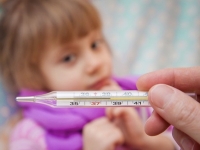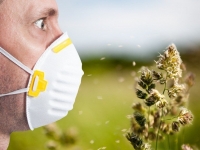Diphtheria: what you need to know about the disease
 Diphtheria and diphtheria toxin
Diphtheria and diphtheria toxin
Diphtheria is an acute infectious disease, which is very dangerous to life. This is a severe inflammation of the upper respiratory tract (in most cases), eyes, skin. The main threat during this illness is not inflammation, but the toxin produced by the causative agent of diphtheria, which causes the damage to the cardiovascular and nervous system.
Diphtheria is caused by bacteria, the so-called diphtheria sticks, the disease is transmitted by airborne droplets, much less often – through household items.
Diphtheritic toxin has a very negative effect on the myocardium, developing myocarditis, as well as it can provoke an infectious-toxic shock, a general intoxication of the body, severe disorders in the work of the nervous system.
Children who are aged 3 to 7 years are the most vulnerable to diphtheria, but anyone can get infected. Diphtheria is insidious by the fact that the signs of the disease do not manifest themselves at all, and apparently a completely healthy person can be the carrier of this infection and distribute it without even knowing it. The incubation period of diphtheria is from 2 doses of 10 days, and the first symptoms can appear during this period of time after the time of infection.
Symptoms of diphtheria
The first symptoms of diphtheria include the following:
slight increase in body temperature;
sore throat, especially during swallowing;
redness and edema of the tonsils;
plaque in the form of a white or yellow-gray film on the tonsils.
After about a week, the mild form of diphtheria (usually only in the vaccine) ends with the recovery of the patient. If this does not happen, the disease becomes a severe toxic form, which is extremely dangerous to life.
For the toxic form of diphtheria, the following symptoms are characteristic:
very high body temperature (up to 39.5-41.0 ° C);
severe headaches;
drowsiness, apathy;
pallor of the skin;
dry mouth;
multiple vomiting;
abdominal pain;
sharply expressed edema of the tonsils;
difficulty in breathing;
snuffle;
a significant increase in cervical lymph nodes, it is painful to touch them.
These are manifestations of the most common form of diphtheria. There is another diphtheria of the nose, eyes, skin. They are less common, but they are also very dangerous.
Treatment of diphtheria
Diphtheria is treated only in the infectious department of the hospital. The patient must enter anti-diphtheria serum, without which dies up to 50% of patients with acute toxic form of the ailment. But even the introduction of such a serum does not give 100% guarantee on the positive end of the disease. In addition, there is currently a significant shortage of this serum in Ukraine.
Also, treatment involves the use of antibiotics, as diphtheria is caused by bacteria. Doctors can recommend local remedies to improve the general condition of the patient. Therapy is long and nobody guarantees that a person will be able to save.
About Diphtheria: What to know about a disease that Ukraine’s physician Komarovsky predicts? Diphtheria in the civilized world has almost been forgotten, and even until recently, it was almost impossible to find a doctor who saw her course, and not only read about the disease. However, everything can change now, since in recent years in Ukraine the situation with vaccinations, in particular from this serious illness, is not satisfactory.
According to the vaccination calendar approved by the Ministry of Health, vaccination from diphtheria should be performed in children aged 2, 4, 6 months, then revaccinate at 6 years and 16 years. It is also important to remind all adults that they should make revaccination from diphtheria every 10 years throughout their lives, only then can we talk about protection from the disease. Only through preventive vaccinations can prevent the spread of diphtheria in Ukraine, as Yevhen Komarovsky said in his speech.



